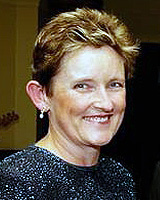Dear Editor
External Clinical Teaching (ECT) visits were developed in the mid-1980s to enhance registrar learning in general practice (GP) through observed clinical consultations and immediate feedback from experienced GP teachers; they were valued by learners1. This is the visit by an external expert to observe consultation skills and provide timely, sensitive feedback to assist future skill development. However, medical students on rural longitudinal placements complete attachments within their rural town (GP, community and hospital based) and take advantage of opportunistic learning rather than a formalised program. Previous research has highlighted the desire of medical students for increased timely feedback2. The ECT visit, familiar to GPs using the existing RACGP tool, was considered a useful model to increase formative feedback to students on rural placement. The practical application, teacher and student experience and possible benefits, from the ANU experience of using this model with undergraduates, are here described.
Academic staff (not involved with summative examinations) visited 20 rural students on placement for formative feedback. Site visits are common in medical schools (often employing established tools such as the Mini Clinical Examination [miniCEX]). The difference here was the application of a well-used structure of postgraduate training to undergraduate education. Students were given prime responsibility for organising the visit. Feedback was student-centred with student-academic discussions about preference for feedback and focus areas for attention. The completed ECT checklist was only kept by the student, and supervisors received brief written feedback about student progress. Student feedback was sought by structured email as a quality activity. Students consented for the deidentified inclusion of their comments in this brief report.
Most students completed a sound interview with many areas for improvement identified. The ECT visit, although designed for GP settings, worked well with hospital bedside consultations. Students mostly gave the experience a positive review. Supervisors were positive about receiving student feedback (albeit very brief). Student comments reported valuing the delicate balance of being critiqued and challenged while maintaining a supportive atmosphere. This is especially difficult in a long-term rural placement. The growing relationship between supervisor and student can make it hard for critical feedback, a consistent theme in student feedback:
...getting informal constructive feedback, particularly from a source outside...
It was great to get feedback from a Dr who doesn't usually teach us, as they have no obligation to say nice things in order to maintain a functioning long term relationship!
The visiting academic met with supervisors and heard about the progress of the year. With students there was conversation about settling into the year, and progress with family and rural life outside medicine. This 'soft' outcome is not to be undervalued. The rural stream can be a difficult change for some and the ECT visit could be an acceptable means of extending pastoral care from the central university structure.
Although developed for a postgraduate environment, ECT visits translate well to the rural medical school. They are feasible, easily integrated into GP and hospital placements and sought by students as an additional learning experience.
All involved are thanked for their time, comments, hospitality and support.
Cathy Owen MD, FRANZCP MHE, Amanda Barnard FRACGP
Rural Clinical School, Australian National University Medical School
Australian Capital Territory, Canberra, Australia
References
1. Hays R, Peterson L. An evaluation of visiting clinical teachers in general practice training. Education for General Practice 1996; 7: 54-58.
2. Ende J. Criteria for feedback - graduate medical program. JAMA 1983; 250: 777-781.

